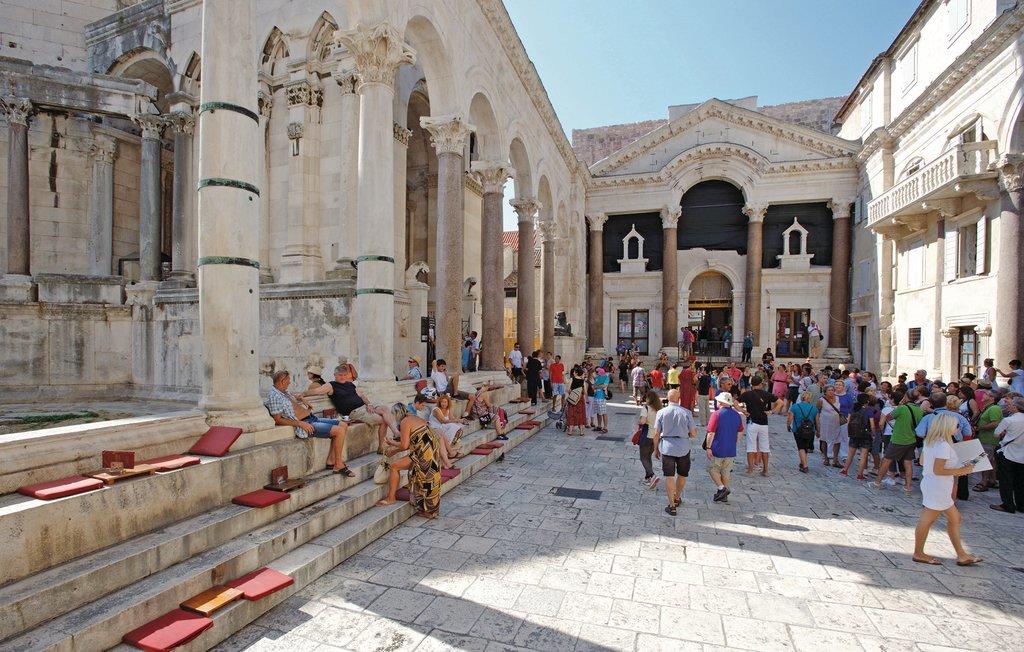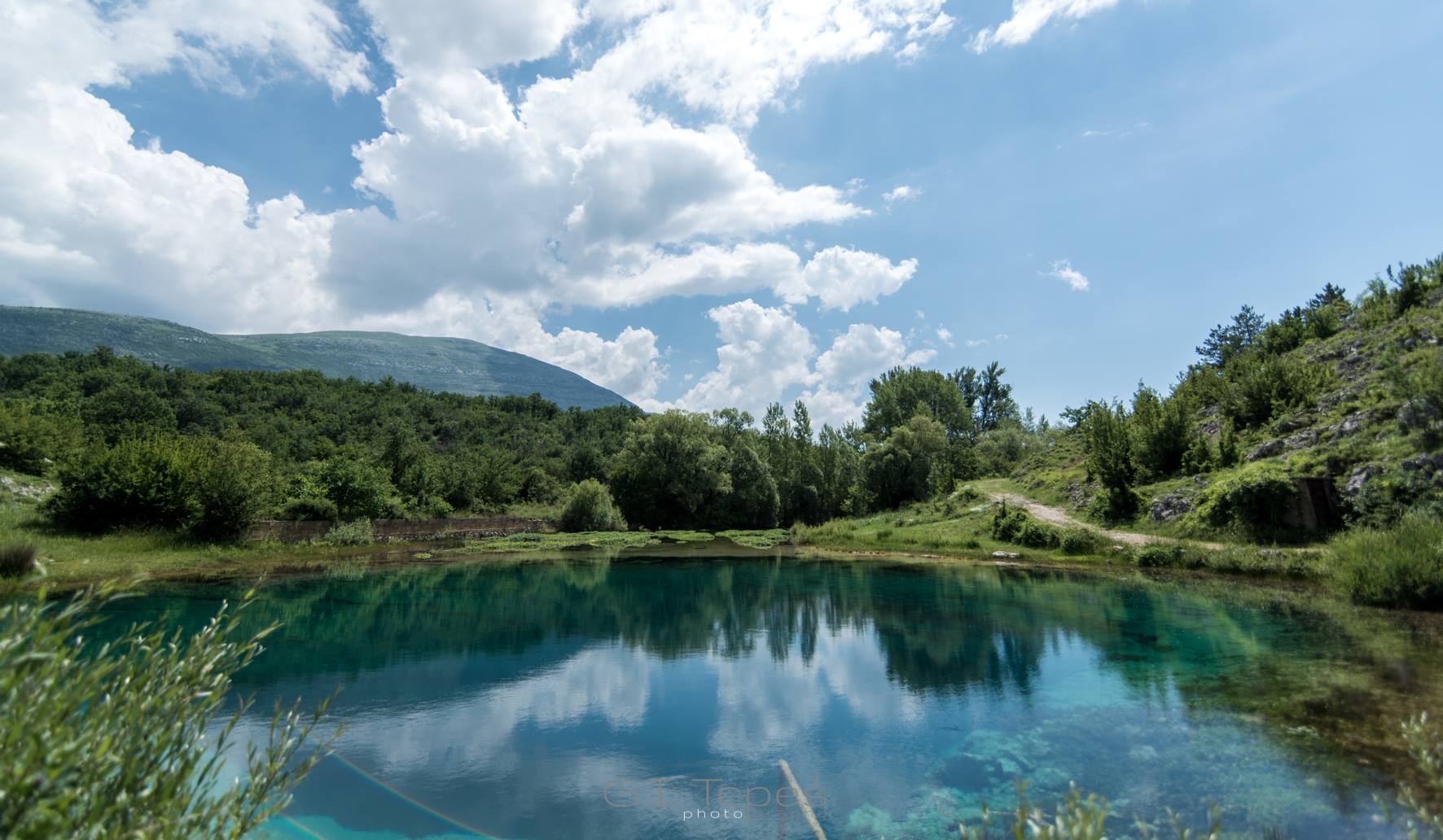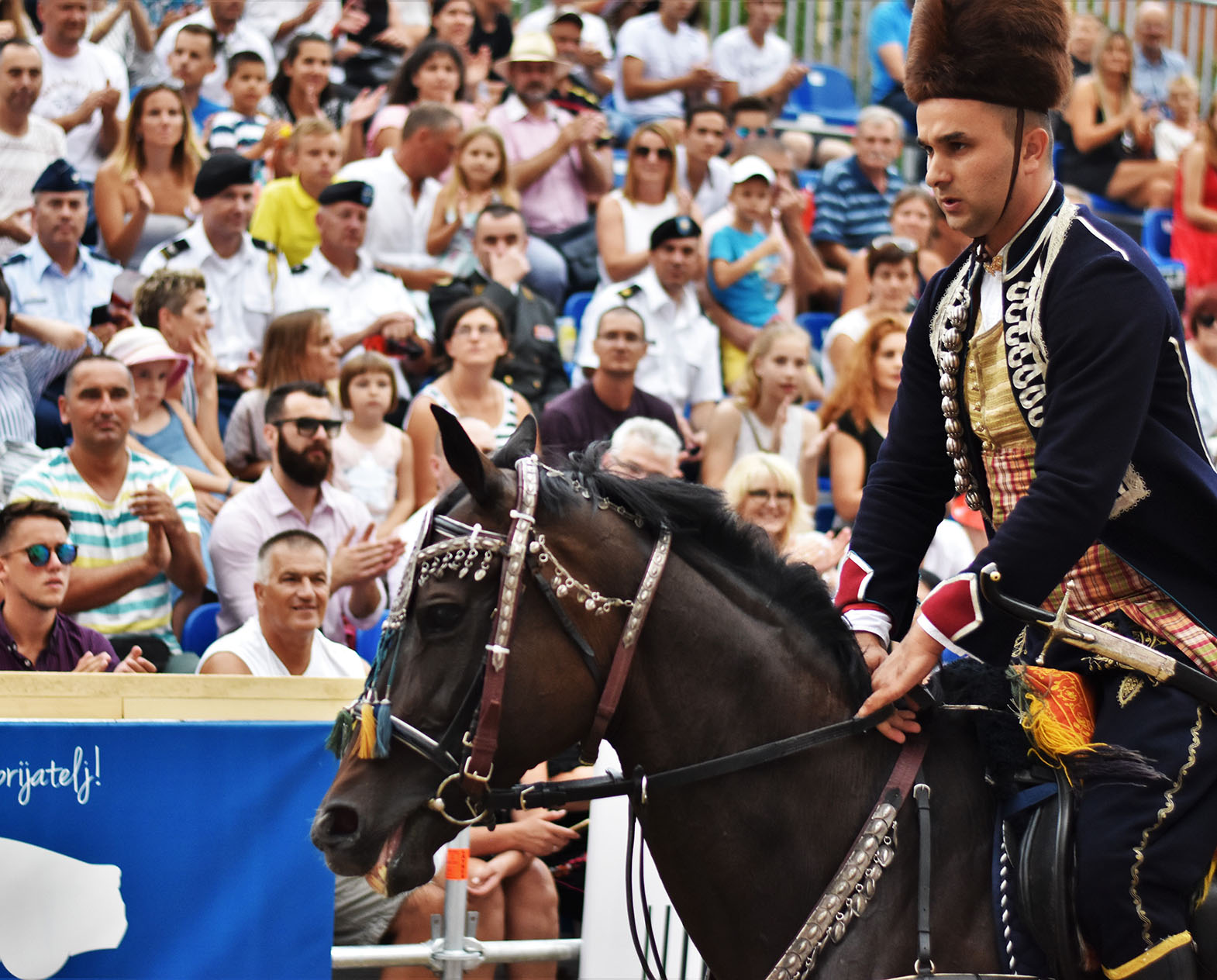Birdwatching in Cetina Region – a true treat!
The area of Cetina Region is of unique natural beauty, known for its beautiful mountain landscapes, meadows, lush vegetation and amazing water springs.

Although relatively small in
size, it is characterized by exceptional geographic diversity, making it an
attractive area for bird populations.
Birdwatching involves observing
and studying birds with the naked eye or with the help of optical aids such as
binoculars, telescopes and photographic equipment.

Birds can be found everywhere around us and are often the largest group of animals which a citizen can come across. From the initial assumption, that only a few bird species, such as pigeons, sparrows and blackbirds, actually live in the city, observation can easily lead you to a conclusion that birdlife of mountain species is significantly more varied.

In the Cetina Region, there is a growing popularity of birdwatching (or birding), and it trully has great potentials thanks to the rich bird fauna that inhabits this area. More and more often, foreign travel agencies bring tourists birdwatchers to Croatia to show them the distinctive natural heritage of this beautiful region.

Pavića nebesa – Sinj's favorite promenade
Since Pavića nebesa (in Croatian:
Pavić's Skies) is one of the favorite promenades among the locals of Sinj, the
Tourist Board of Sinj, supported by the Tourist Board of the Split-Dalmatia
County, has given it a special touch by setting a bird watchtower, benches,
kennels.

Nicely redecorated, Pavića nebesa promenade will serve as a natural attraction for tourists visiting the Cetina Region, through the evermore popular hiking, as well as bridwatching – observing birds in the forests, as their natural habitats.

Only half-an-hour-away from the center of the town, Pavića nebesa is a place for educating children about the importance of preserving nature as well as its biodiversity, and a place where birdwatchers, in its peace and silence, can observe numerous species such as wood pigeons, orioles or woodcocks, and listen to the silent roars of larks, forest owls or love calls of blackbirds.

The best time for this form of tourism? Spring!
Birdwatching takes place
primarily in spring, during the nesting season of most bird species. The most
favorable months are May and June when all the nesting birds are present. It's
the period when the birds are most active due to their singing, wooing,
coupling and territorial flights. The fact that birdwatching travel activities
take place in the pre-season, increases the utilization of existing local
capacities which are fully sold out in summer, during July and August. In this
way, birdwatching tourism contributes to the lenghtening of the tourist season,
which is in line with the Croatian tourism strategy.
The wider area around Sinj includes two vegetation zones: the Submediterranean area of deciduous vegetation and the mountainous zone. The highest parts of Svilaja and Dinara mountains belong to the mountainous zone, while the rest is included in the Submediterranean area of deciduous vegetation.
A true treasure is hidden in the
rich flora and fauna that nature has generously spread all over the Cetina Region.
In almost surreal landscapes,
boosted by clean air and inspired by the karst subterranean labyrinths of River
Cetina, numerous plant species grow. In addition to the rich flora, the Cetina
Region is abundant with numerous animal species.

A diverse plant layer, bushes, pits and rocks provide perfect nesting places to numerous species of birds. On the cliffs of the canyon you can find nests of mountain pasture birds. Look into the thick canyon forest, in the habitat of black woodpeckers. On the rocky plateau of the protected belt, in the tall grass, you will come across the nests of crown larks and rock partridges. Take your binoculars and sit back comfortably, looking towards the tall pine trees, where you will be able to spot nests of buzzards and hawks.

The Significant Landscape of Sutina was protected in 2000, on an area of 426.80 hectares, and it covers the upper canyon of Sutina stream, Cetina's tributary. The canyon of mountain stream Sutina, with its unusual setting of the plant layer, is a typical example of botanical inversion.
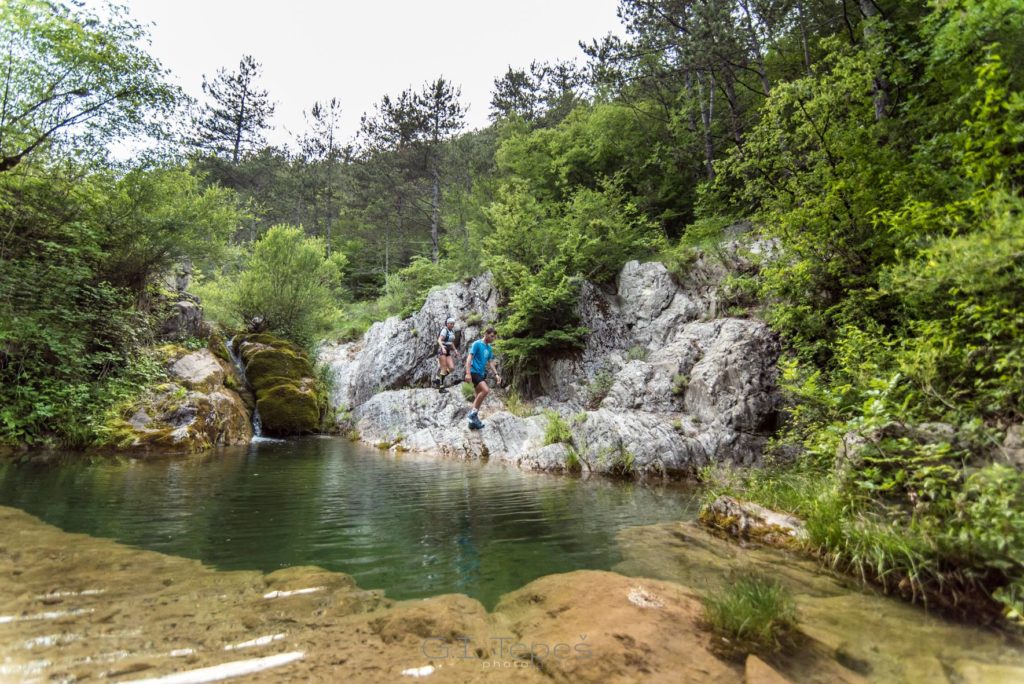
The dense forests of the canyon are the habitat of black woodpeckers. On the rocky plateau of the protected belt, deep in the grass, you will be able to find nests of crown larks and rock partridges. On tall pine trees, there are the nests of buzzards and hawks. At the exit from the canyon, where erosive effects are strong and sandy slopes are formed, you will find canals of bee eaters, in which this species raises its young ones.

The Significant landscape Rumin includes Mali and Veliki Rumin, on a surface of 33.5 hectares, and its status was confirmed in year 2000. Mali and Veliki Rumin represent the core part of Rumina, the second largest of Cetina's tributaries.

While in the summer Mali Rumin runs dry, Veliki Rumin, which runs under the gorge called Greda, never goes dry. The steep cliffs of Rumin are home to bird species such as ravens, kestrels and beaufitul long eared owls. On the karsty slopes at the foot of the cliffs, you can find nests of northern wheatears and rock partridges, and in the lowlands, on the fields and ploughed lands, you will encounter grey partridges, quails and crested larks.

Along the foothills of Rumin, the
long-tailed tit creates its ball-shaped nests,
and on the oak branches, the basket-like nests of orioles hang. On the
old oak trees, a large woodpecker is also easily found, while the wild ducks
come to sip on the waters of Rumin.
The Project “Sinj u sridu”, as
well as promotional materials and their implementation was co-financed by the
European Union from the EU Fund for regional development and operational
programme Competitiveness and cohesion 2014-2020.
Content of promotional article
is sole responsibility of JU RERA for coordination and development of
Split-Dalmatia County and under no circumstances does it reflect the attitude
of the EU and/or the governing body.
For more
information visit www.strukturnifondovi.hr
More: www.cetinska-krajina.hr
Photo by: Tourist Board – City of Sinj

Sacral heritage of the island of Brač - not to miss treats for culture enthusiasts!
WHAT IS YOUR PERSONAL EXPERIENCE OF OUR BIGGEST ISLAND? As a “capital” of the tastiest lamb, a place where you can have great cycling experience in idyllic Mediterranean ambience, an oasis of Robinson vacation or a perfect getaway for bathing, sunbathing and water sports?

Perhaps you did not know that together with many various and attractive aspects, Brač has even 116 sacral buildings, thus being a true heaven for culturists! In order to preserve them and make them marketable, four years ago an attractive guide was published in which sights have been catalogued in 5 cultural itineraries. We have singled out some that are truly worth visiting!

VISIT THE MOST BEAUTIFUL BELL TOWER ON DALMATIAN ISLANDS. Whoever watched “Little place” by Miljenko Smoje, must remember emblematic opening scene where the “main role” is played by picturesque place on the west side of the island – Ložišća!


Image of an idyllic place of steep and narrow streets with houses spread out like someone tossed out some pearls is dominated by the most beautiful bell tower of all – not only on Brač, but on all Dalmatian islands in general! Enjoy in sightseeing this magnificent, tall and decorated bell tower from 19th century, a work of the great Ivan Rendić. Do not forget to take a few photos, which will be a real treat for aesthetes and cultural enthusiasts on social networks.

DISCOVER THE SPRINGS OF SACRAL TREASURES – BAROQUE AND MEDIEVAL CHURCHES. For those in love with sacral art we warmly recommend sightseeing parish churches all over the island (like the one in Selca!).

Enjoy in their mostly baroque features and worthy altarpieces, whose authors are Ridolfi, Bassano, Balestra, Diziani and even famous Tintoretto, whose great altarpiece is kept in Dominican Pinacoteca in Bol!

If you want to visit medievalchurches, of characteristic hanging arches and bell towers which were several centuries later upgraded to the distaff, visit church of St. Peter in Dol with the oldest bell of that kind. The interior of these edifices usually keeps worthy altar reliefs, whose authors are famous artist slike JurajDalmatianac, Nikola Firentinac or Nikola Lazanić, a sculptor form Brač.
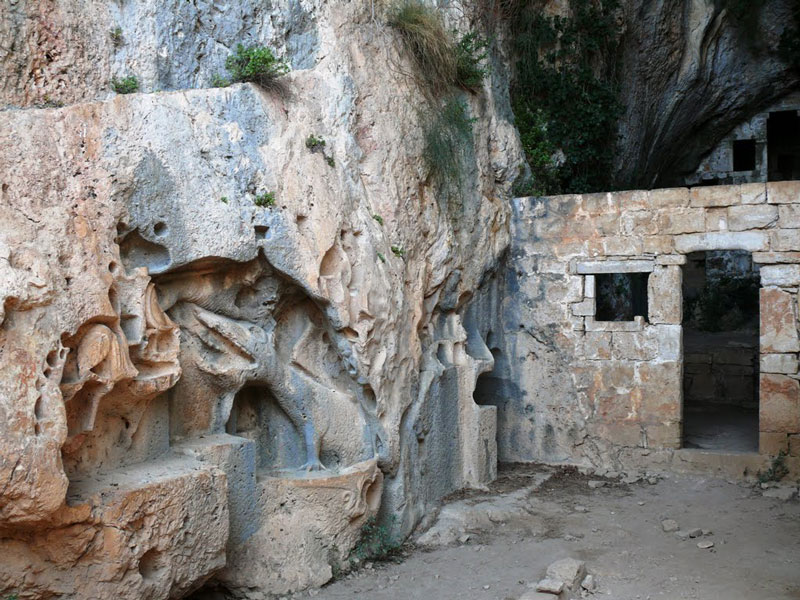
VISIT A CRADLE OF EARLY CHRISTIANITY – AND A CAVE WITH DRAGONS! For those in love with cultural heritage, early – Christian churches and churches on places of pre-Christian cults are a true curiosity.

It’s also worth visiting remains of basilica in Povlja and its baptistery preserved up to the roof, and a basilica in Lovrečina with preserved murals and renewed baptistery vessel; while a series of fragments of stone furniture from these churches can be seen in Museum of the island Brač in Škrip. Among the localities that date back to even earlier periods (like St. Vid on Vidova gora or St. Duh near Gornji Humac) Dragon's Cave is especially interesting. It was named after a relief of a dragon, which presents a mixture of Slavic mythology and Christian iconography, thus fantastically depicting spirituality of the contemporary human – paganism reconciled with Christianity! Sightseeing of Dragon's Cave is actually a great excursion, on which even the makers of “Game of Thrones” would envy you, since Bračhad its dragons for a while now!

VISIT BLACA DESERT - A STONE JEWEL IN ROCKY WASTELAND! We’ve left one of the most striking locations for the end – for centuries upgraded monastery in Blacadesert! Once it was a world-famous astronomical observatory, it had its own printing office, while due to extensive book collection, unique furniture, old weapons and clockscollection, it is attractive even today. Staying in an authentic ambience of former monks’ and Glagolitic priests’ residence – who wrote pages of rich monastery’s library in one of the three variants of Croatian Cyrillic - poljičica, for all those who truly enjoy in culture is a - real treat!

Photo: www.dalmatia.hr

The Cetina region - Discover the hidden adrenaline kingdom
If you’ve got to know the Cetina region the best from Sinj’s
Feast of Our Lady and the famous Alka, one truly great opera, and the best
uštipci in the world (from Vrlika) - it's time to change that!
No, we’re not suggesting that you give up on all of the attractive traditional content, nor the sensations for the senses (especially not those for the palate!), but simply to add a bit of sporting adrenaline to your experience! If you like to spend your holidays actively, simply take advantage of the fact that this beautiful, picturesque region is home to one of our three largest coastal rivers - sometimes wild and untamed, and sometimes gentle and tame, the emerald green Cetina!

Look into its green-blue eye. Let's start from its source, which is located near Vrlika, in a place that, due to its beauty, significance and attractiveness, is designated as a hydrological monument. These are the Cetina springs, which, in addition to the wonderful feeling of complete displacement from frenetic everyday life, will enchant you with untouched nature in the true sense of the words, as well as cultural and historical jewels! Don’t miss out on seeing the Church of St. Salvation, which is known as one of the most important local pre-Romanesque monuments, which delights the public with its distinctive contours!

This indispensable ‘’portion’’ of sights will delight you along with an adrenaline rush - the slack line which has become more and more popular in recent times, that is, a rope walk over the Cetina’s fascinating blue-green eye, which seems to be much shallower than it actually is owing to the game its colours play! Give this balancing sport a try - walking between two strongholds, just above the glassy clear surface of the Glavaš well, which is what the heart-shaped little lake which acts as the main source of the Cetina river is called. And, should you fall, prepare yourself for the ice-cold spring water, which is only 7-8 ° C even in summer!

You can choose your own ‘’level’’ of excitement. Would you like to enjoy the beauty of the Cetina, but in a more subtle "scenario" than that? Choose to ride the Cetina section through the Sinj field (Sinjsko polje) as part of a canoe safari! As this activity requires no special skills or previous experience, all generations can participate in it, observing the wilderness around and taking pictures, and if you wish, you can also enter the dead backwaters and enjoy the wetland ambience, or disembark and explore the river’s island.

The springs of the Cetina come together at Peruća Lake, and you can try out the canoe safari there too - discover its beautiful little bays overlooking the Dinaric alps and the Svilaja mountain range! But this is just a part of the excitement that the Cetina river has to offer, and everyone who has swum in its waterfalls knows it!

You can treat yourself to this unique experience near the village of Zadvarje, where the Cetina calms its currents down for a moment and makes it suitable for enjoying the view of the water falling from 49 or 7 metres in height. These are the powerful and beautiful waterfalls of Mala and Velika Gubavica, which are considered to be the most beautiful waterfalls of all on the Cetina river!

Activate the adrenaline bombs - rafting and canoeing! In addition to all these activities, there are some real adrenaline classics in which every lover of active holidays will enjoy to their absolute core! Rafting on the Cetina river is, according to experts, the absolute best in the area.

Not convinced? Join the groups that, along with the obligatory accompaniment of a professional guide, master the area with an alluring and enigmatic name - Z - known as the place where the heart descends into your heels, or Javornica.

Not even the quieter parts of the river are devoid of excitement - especially in visual terms! - Enjoy the view of the lush flora and fauna that includes ducks, turtles, and those from the dragonfly and damselfly family.

And, if you want an adrenaline-filled experience that combines walking along (and through!) the Cetina, swimming under waterfalls and mastering river rapids, try canyoning - no dry clothes come out of this adventure, so get ready for icy river water!

Zipline - excitement which doesn’t wane. Ever since it was
established, the zip line, or a steel cable flight over the Cetina canyons, has
been one of the most attractive and sought after activities of all.
This is due to the excellent and very professional guides, who
give clients a sense of security and support, and a few extra words of
encouragement if they are caught by the fear of the very view of the karst
landscape intersected by the mighty and wild river that they are just about to
‘’fly’’ over. If you want to find out why this activity carried the Certificate
of Excellence on the most strict and stringent of travel portals, venture out
and enjoy a true flying adventure that will one day be a great anecdote for
telling future stories, as well as an enviable “notch” in your adventure
portfolio!
The Project “Sinj u sridu”, as
well as promotional materials and their implementation was co-financed by the
European Union from the EU Fund for regional development and operational
programme Competitiveness and cohesion 2014-2020.
Content of promotional article
is sole responsibility of JU RERA for coordination and development of
Split-Dalmatia County and under no circumstances does it reflect the attitude
of the EU and/or the governing body.
For more
information visit www.strukturnifondovi.hr
More: www.cetinska-krajina.hr
Photo: TB Trilj, Tz Sinj, TB Vrlika, Adventure Dalmatia
Gastronomy of Trilj region - meet the rhapsody of tastes that exhilarates
MYSTERIOUS AND SOMEWHAT MISTIQUE TRILJ, has embossed its gastro map with a similar print. It originated in the place of old Roman camp Tilurium, and not only did it intertwine the roads of ancient people, but also the most diverse culinary influences!

In Trilj’s cuisine karst and river blend, while dishes are refined with honey, dates, figs and old Roman condiments! Besides characteristic Dalmatian specialties, Trilj will spoil your palates with veal under the baking lid, frog stews, Cetina trout and crab stews, but with successfully interpreted dishes with ancient mark as well! If you are eager to find out which specialties awaken a true pride among Trilj people, which delicacies date back to ancient times, which you mustn’t miss – it’s worth reading on!

A FEATURE OF IRRESISTABILITY. Favourite dishes renowned as true classics on Trilj area are by all means, veal and lamb on a spit or under the baking lid. Both ways of preparation give this food the same feature – you just can’t resist them! Namely, how else to describe tempting meat on a stick, which depending on a type of wood the stick is made of, captures sophisticated wood aromas that make your heart mellow? Or truly delicious, tender veal or lamb under the baking lid, heated with beechwood, cooked and roasted at the same time under the iron lid strewn with wine grape live coals?

SWEETEN YOUR PALATES WITH MEAT – OR EVEN RIVER SPECIALTIES. When an important dinner for a special occasion is prepared in Trilj, there is a great chance that aforementioned dishes will be on a menu. Even though exquisite octopus can also be found under the baking lid, very special Trilj delicacy is polestar (young rooster)! Bread is also often baked under the lid, and they are especially proud of their traditional dish made of lamb meat – Trilj’s šiša – made of three times boiled lamb offal and intestines, with addition of bacon, home-grown onions and tomatoes! A particularly typical of Trilj is also baby beef tongue in sauce, followed by kaštradina (dried mutton), and game meat prepared in various ways. This being a region of wild and powerful the Cetina river, it’s not surprising that, besides meat you get to sweeten your palates with an abundance of river trout and crabs, or frog stew.

ENJOY IN MEALS PREPARED ACCORDINFG TO A COOKBOOK – FROM 1ST CENTURY! In Trilj you can taste the best sheep and goat cheese, fresh cow cheese, often accompanied by delicious doughnuts! Sacrificial bread Libum presents a true gastronomic sensation, and it’s still made in Trilj in ancient way!

The most interesting fact is that this bread, besides flour ad eggs, contains also sheep cheese and laurel leaves, while there are versions when it’s made with 5 types of cheese, one egg, and no flour at all! To make this gastro story even more interesting: this is just one of the many ancient dishes made in Trilj on specific gastro points – there are trout with Roman dressings, Lukanijeve sausages that are a combination od meat and honey, and dumplings made of cow cheese, honey, olive oil and poppy seeds. Together with Trilj’s grandma’s recipes, jealously kept for generations, to gastronomads’ joy, there is also a cookbook from the 1st century – very much in use!

DO NOT FORGET SMOOTH WINES AND AUTOCHTONOUS DELICACIES. We haven’t forgotten about those in love with a sophisticated wine drop - after all, tasty and distinctive meals need to be finalized in grand style! Let it be homemade Trij wines of harmonious, luxurious and velvety taste, grown on the slopes of Strmendolac and Čaporice, like ninčuša, glavinka, plavina and babić.

Forgotten
delicacies
Those with a sweet tooth should try Trilj Cake, the so-called Padišpanja.
Photo: TB Trilj
The Project “Sinj u sridu”, as
well as promotional materials and their implementation was co-financed by the
European Union from the EU Fund for regional development and operational
programme Competitiveness and cohesion 2014-2020.
Content of promotional article
is sole responsibility of JU RERA for coordination and development of
Split-Dalmatia County and under no circumstances does it reflect the attitude
of the EU and/or the governing body.
For more
information visit www.strukturnifondovi.hr
More: www.cetinska-krajina.hr

Cultural treasures of Split-Dalmatia County: Most Beautiful Fortresses of Dalmatian Zagora
Can you imagine walking around the streets and areas where people used to pass by in the ancient times? To feel the spirit of history, the beliefs, lifestyle and culture of these ancient peoples? The area of today's Split-Dalmatia County has been interesting to people since ancient times, and the existing, preserved fortifications are witnesses of those past times.

There are seven historical forts of Split-Dalmatia County, which have been awaken from their dream. In the next few lines, we will take you on a trip and introduce you to the most beautiful Dalmatian fortresses, that offer stunning views of their surrounding areas...
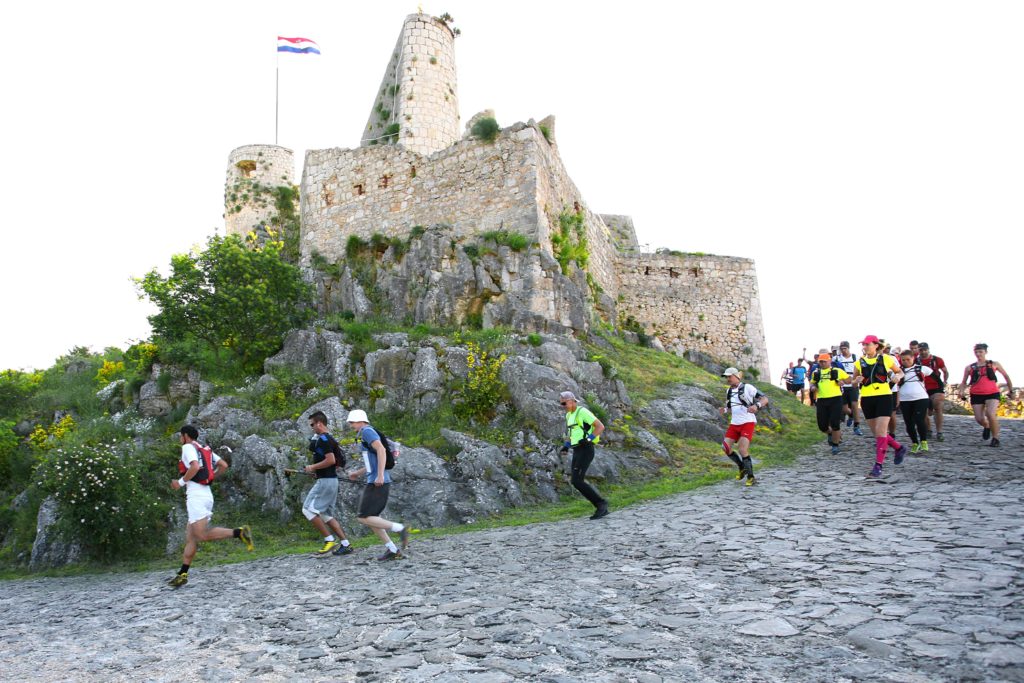
Historical fortresses in travel agencies' programs & offers
Whether you are going to Klis Fort, visiting the
attractions of the ancient city of Salona, or coming to Prozor Fortress in
Vrlika, Nutjak in Trilj, Kamičak in Sinj or Topana in Imotski, you will actually
take a trip back to the past and for a moment, get the feeling that once upon a
time, they were fully inhabitated. Do come by Gradina in Vrgorac, which will
round up your tour and complete the cultural and historical offer of the
Dalmatian Zagora.
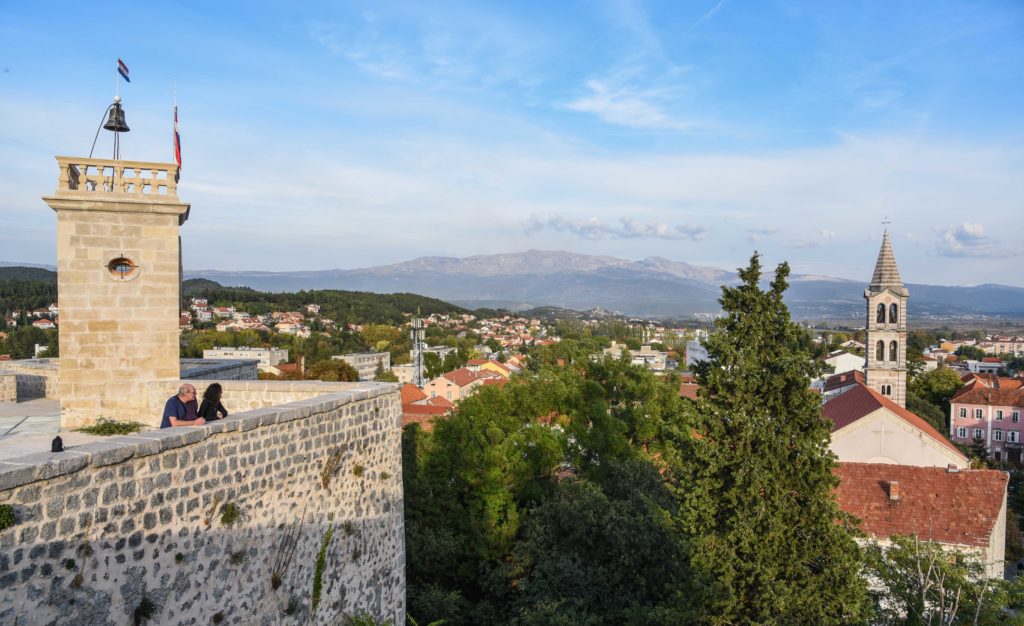
Sightseeing of the old forts is part of the programs offered by travel agencies in the area of Split-Dalmatia County. This is the first county in Croatia with a complete Strategy for the Development of Cultural Tourism, and so far 69 historical buildings have been valorized, including forts, towers and fortresses, and this number is still not final. This is the first step in creating a new and attractive tourist product.

KTo help you find what you are interested in, a cultural and tourist guide to the "Split-Dalmatia County Fortresses" was published, by author Ivan Alduk. This guide includes fortresses from the entire county, with emphasis on the best preserved historical buildings, especially the late medieval fortresses and the ones from te period of Otoman-Venet

Klis Fortress – Must-see travel gem where "Game of Thrones" was filmed
The importance of Split and its surroundings, when it
comes to their role in cultural tourism,
was well-recognized by the producers of the world-renowned "Game of Thrones" series, as they chose Klis,
among many other locations, to film various scenes from this series, and thus, launched
a type of film tourism. The historical stories of Klis Fortress have taken a
tour around the world, surprising foreigners in many countries, with the fact
that only a few kilometers away from Split, there is a monument which, with its
appearance - on the very stone cliff between Mosor and Kozjak mountains,
provokes such awe. If you want to see the fort, do get ready for a couple of
hours of touring this large building, consisting of walls, passages, towers,
stairs and streets. Do not be discouraged and stop halfway because, trust us,
when you get to the top, your breath will be taken away by the views of Split
and its archipelago. This gorgeous fort justifies all the reasons why it was
named "Croatian Camelot".

Prozor Fortress - Populated from prehistoric times
One of the fortresses that will capture your attention is
certainly Prozor Fortress in Vrlika, which was inhabited in prehistoric times.
Today, it can be reached by pedestrian road in about 20 minutes of walking,
starting from the Orthodox Church in Vrlika all the way to the top. There is
also a longer road, leading from the Vrlika-Drniš road.

Thanks to its level of preservation, it is one of the most important medieval fortresses in Dalmatian hinterland. The fortress offer an impressive panoramic point on Vrličko polje, Lake Peručko and on the city itself, and its surroundings.

Nutjak near Trilj
Nutjak Fortress was built downstream from Trilj, at the edge of the lower rocky plateau rising high above the right bank of Cetina River. Just a simple look at this unusual fortress, located on the very edge of the cliff, causes a series of emotions - from awe to admiration.
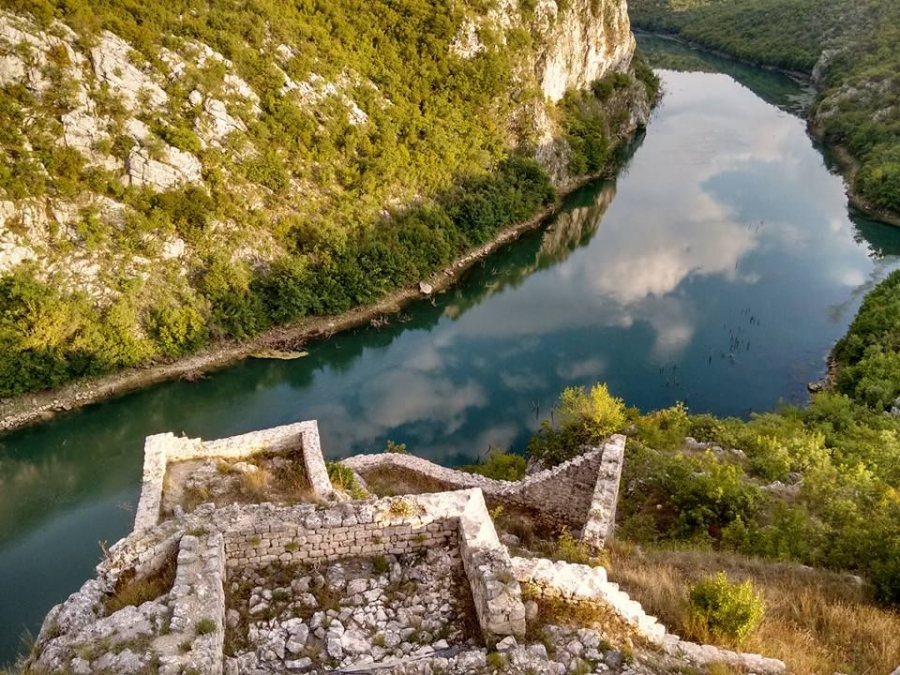
The fortress is reachable by a road starting from the village of Živaljići.

Kamičak - Protected cultural heritage
One of the most important symbols of Sinj is Kamičak Fortres, located in the center of the town, opposite the Church of the Miraculous Lady of Sinj. Kamičak, a protected cultural heritage, together with the military horse baracks, is connected with today's Alkarski Dvori (The Alkari Palace).
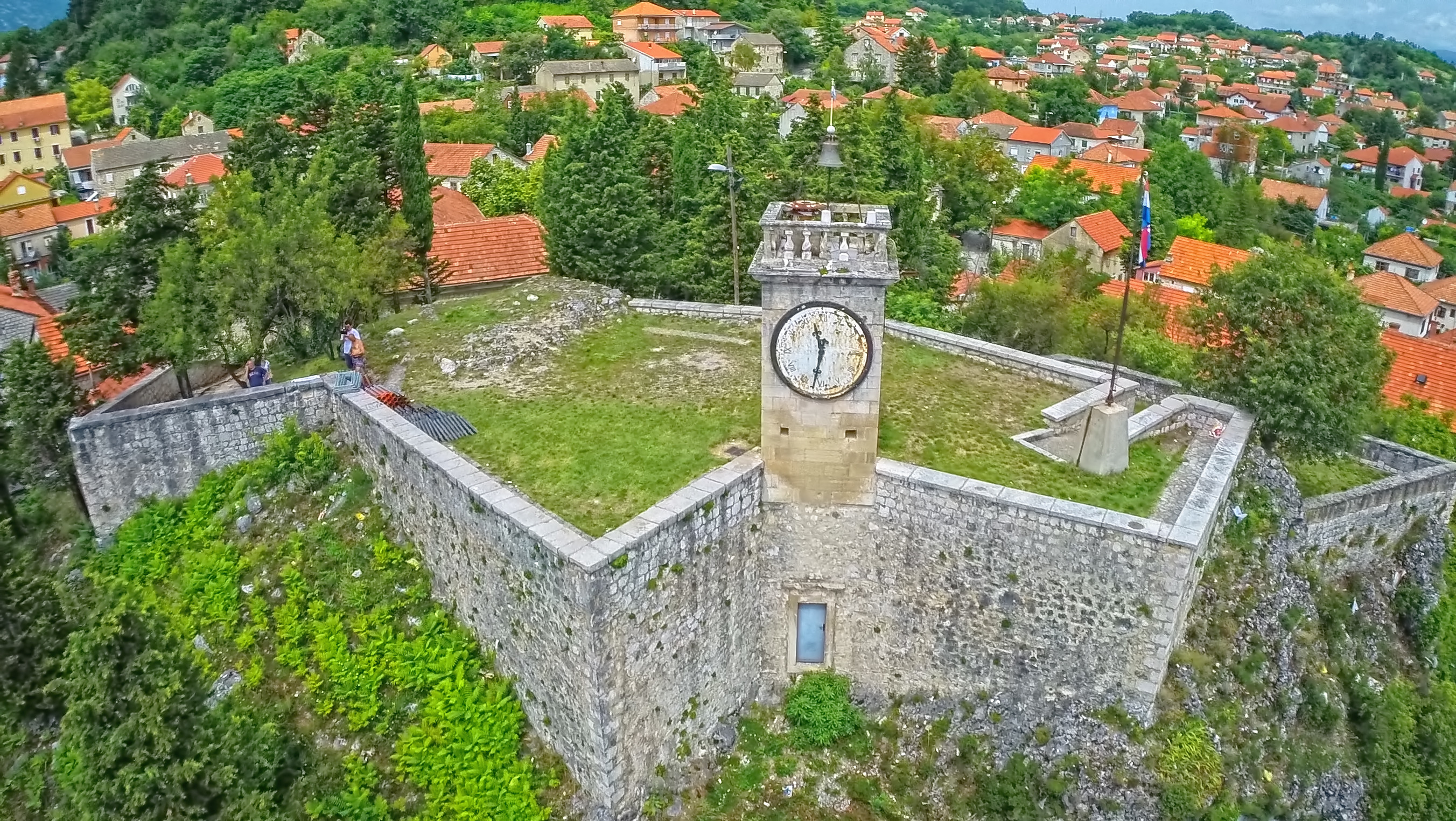
It was given its present appearance in 1980 when it was additionally surrounded by walls and afforested with pines. On the top of the fort, there is a bell with the inscription – Our Lord, set us free from thunder and evil times - which probably derives from the belief that the sound of the bells or the shooting from old "mužar" canons scares away the clouds and the thunder.

Topana – Favorite panoramic point
Situated on the cliffs above Modro Jezero (Lake) is the Topana Fortress, one of the most important medieval fortification facilities in Dalmatian hinterland. It is interesting that the fortress was named after a special tower with a cannon platform, known in the local language as "topana".

Today, the fortress is in fact a panoramic point, with an unforgettable view of all four corners of the world. In the summer season, there are various cultural events held here.
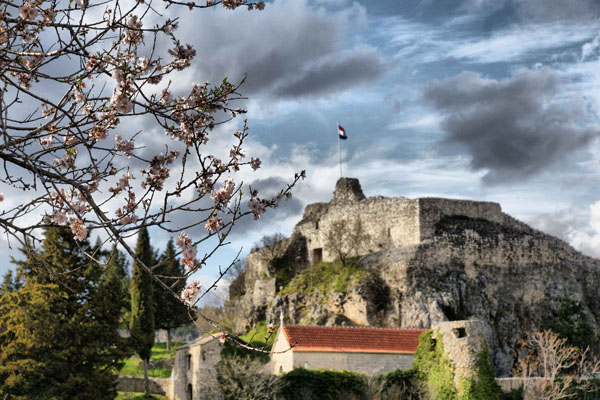
Vrgorac Gradina – Where roads meet
Gradina Fortress is situated at the intersection of the roads
from the coastline to the hinerland. Its
oldest parts were built by medieval noblemen, who managed this area, and was later upgraded by Muslim commanders.
Visit this fortress and Vrgorac, the town where one of the greatest Croatian
poets, Tin Ujević, was born.

Visit the witnesses of the stormy historical times in the Dalmatian region and choose a rustic family agrotourism in Dalmatian Zagora, for your place of residence. Tourism is booming in Dalmatian Zagora, which is evident in the ever-increasing demand for luxury villas, which offer the charms of both comfort and elegance. The former stone houses of our ancestors today are luxurious villas, many of which have pools, to provide their guests with maximum cosiness during their holidays.

Photo: www.dalmatia.hr , archive of Tourist boards of Split Dalmatia County

Vis Island – Explore the "Croatian Capri" - the true charmer which won the hearts of world's elite
TOP 5 NOT-TO-BE-MISSED ATTRACTIONS!
Natural beauty and historical heritage are just one part of the gorgeous repertoire along Split Riviera! Whether you choose to get acquainted with its cuisine, beaches or cultural and historical treasures, you are on the right track to have a fabulous experience as a tourist!
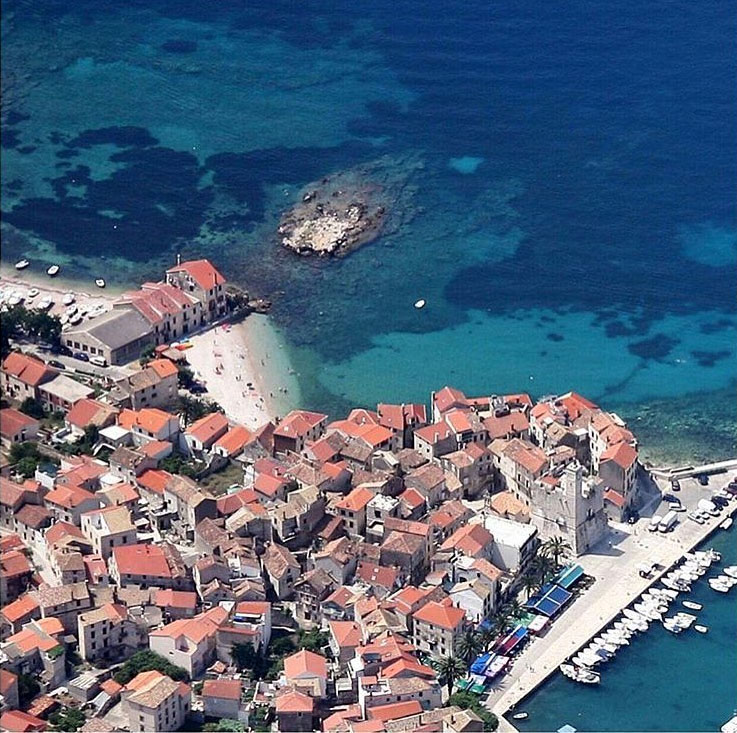
Judging by the growing interest in this region, on the world tourism stage, it seems that many share our opinion, so, in order to get inspired to have a vacation perfectly in sync with your wishes, keep on reading!

Truth to be told, when we know what awaits us, a few-hours-long ferry trip from Split, doesn't come up nor as long, nor as difficult, and as Vis is also a well-known nautical destination, we recommend visits by motorboats and sailboats, as these means of transportation will allow you to have a peak into every single corner of this wonderful island!

The islands rather distant location, separating it from the frenetic rythm of everyday life and its truly unspoilt nature, which is a real treat for fans of Robinson tourism, have not been missed by Hollywood producers, who have skilfully spotted that Vis will perfectly play the role of the Greek island, on which a very famous movie had been filmed. Vis has so played the home-role for the second part of one the most popular of Hollywood productions - the comedy "Mamma Mia!", spiced up with the greatest hits by the legendary ABBA.

To get the best and the most exciting of Vis, keep up with our top 5 most enjoyable experiences that you should never miss. Let's go!

1.USE THE ISOLATED LOCATION AS AN ADVANTAGE. Did you know that up untill 1995, Vis was a large military base? And while some claim that this is the exact reason why it seems that time has stopped here, guests who prefer Robinson-style of travel, as well as all those who want to escape from the noisy & busy everyday life, see this fact as a great benefit! Mysterious, abandoned military facilities (Tito's cave, former RAF airport, Cape Stupišće with a former canon and rocket base...) embedded in beautiful, untouched nature will make you feel like in a James Bond movie - visit them all as part of exciting military tours!

2.GET READY FOR SOME SERIOUS SEA HEDONISM. What would you say about a bay enclosed by two high stone cliffs, between which there is a hidden pebble beach, only visible when you sail through the stone cliff gates? And when you do spot it, it looks like you have discovered a Roman amphiteatre int he middle of the water? This is the exact description of the stunning Stiniva Bay, which can be reached, besides by small motor boats and sailboats, only by climbing and walking on a slightly longer rocky route, much worth the effort – because when you overcome it, you will be visually impressed by this hedonistic seaside perfection, voted in 2016 as the most beautiful beach in Europe!

Although Stiniva took over the throne from many beaufitul Portuguese, Spanish and Greek beaches, other beaches on Vis could as easily enter the competition, for their beauty and location.

Numerous pebble beaches surrounded by crystal-clear open sea (Gusarica, Nova pošta, Velo žalo, Prirovo Town Beach in Vis), as well as sandy and pebble beaches in the coves of Vela Smokova, Milna, Zaglav and Stončica, are a real recipe for enjoying in your vacation, and just like Stiniva, they are an enviously beautiful backgrouund for your next Instagram post!

3. EXPLORE THE GASTRO OASIS. Numerous world renowned travel magazines are recognizing Vis as a foodie heaven, a true paradise for gastronomy! Given that the island is adorned with a unique microclimate, rich and fertile plateau of Vis and the best fishing zone in the central Adriatic, it is no surprise that its gastro points are supplied with supertasty and healthy ingredients!

Choose between restaurants in idyllic gardens and yards, or harbor restaurants at the towns' promenades, in the very heart of small-town life, and fill your plates with marinated grilled fish, fresh grilled squid, octopus dumplings...or some other modernly interpreted spectacle for the palate made by the hands of maestros of Vis' cuisine!

4. MEET THE PRINCESS OF VIS. Speaking of food, it's okay to wash all these delicacies with a quality drink, right? Do try vugava, the authentic wine sort, which has been given such a tender Croatian name due to its fineness, quality and luxurious Mediterranean flavor! What can be better during summer heats, than a refreshing glass of wine that offers the aroma of ripe fruit? Although there are numerous discussions about this sort's origins,

Vis is, as an island of great diffusion, enologically speaking, its gene pool, and it is really an authentic domestic sort, which profile does not match the one of any other sort in the world. The plavac mali sort, is also a very distinctive one, because, with the exception of a small area on Hvar Island, you can see vineyards of this sort only on Vis – and in the sand! Taste these wine treasures as part of the local family-owned agricultural businesses, where you can also try local liqueurs - Vis is famous for its fantastic lemon liquor limoncello, which, although it is originally an Italian product, greatly stands out by its quality from the very original!

5. REDEFINE YOUR PERCEPTION OF BLUE AND GREEEN! Just one visit to the Blue Cave, at the neighboring islet of Biševo, and you will know exactly what we mean!

This 16-meter-deep cave, located in the small Balun cove, is a natural phenomenon - due to its underwater vault on the south side, through which the sunlight reaches the underwater area, and then reflects right back from the sea bottom, it is bathed by this phenomenal blue light, which reaches its most beautiful shade, as the locals will tell you, from about 10 am to noon time.

This 16-meter-deep cave, located in the small Balun cove, is a natural phenomenon - due to its underwater vault on the south side, through which the sunlight reaches the underwater area, and then reflects right back from the sea bottom, it is bathed by this phenomenal blue light, which reaches its most beautiful shade, as the locals will tell you, from about 10 am to noon time.

Photo: www.dalmatia.hr , archive of Tourist Boards Vis and Komiža

Split Riviera – luxury of Mediterranean beauty in one place!
Natural beauty and historical heritage are just one part of the gorgeous repertoire along Split Riviera! Whether you choose to get acquainted with its cuisine, beaches or cultural and historical treasures, you are on the right track to have a fabulous experience as a tourist! Judging by the growing interest in this region, on the world tourism stage, it seems that many share our opinion, so, in order to get inspired to have a vacation perfectly in sync with your wishes, keep on reading!
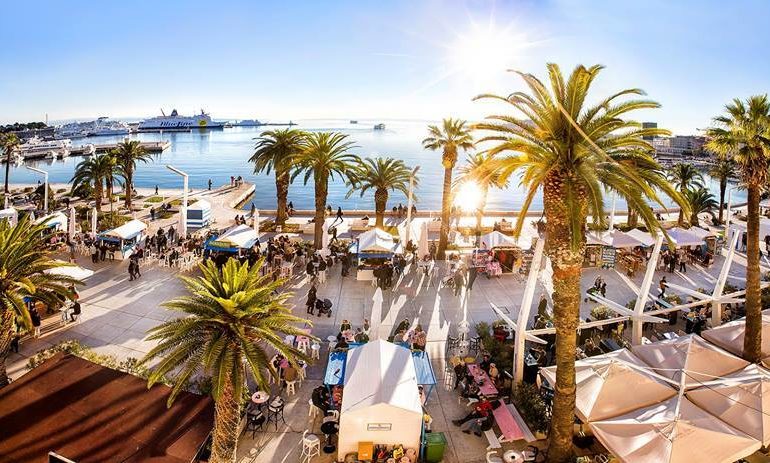
WHAT WOULD YOU SAY IF WE MENTIONED A SEASIDE LANDSCAPE very much alike to the one in the Portuguese Algarve region, but, from the period before it has become overcrowded with tourists? If this sentence has put a smile on your face, start your journey from the counties of Seget and Okrug, where you will find that Mediterranean charm in its most authentic form.
Friendly hosts, who mainly make their living from agriculture,
fishing, shipbuilding and tourism, will accommodate you in polished-up luxury
homes, designer apartments and in
modernly equipped campsites, located just a few steps away from the beach,
which are ideal if you travel with your family!

For a chunk of cultural monuments that are on the must-see list, visit one of UNESCO's pearl, the nearby-located Trogir, and enjoy discovering Master Radovan's Portal, the Kamerlengo Tower, Ćipiko Palace and other cultural and historical gems that seem to have slipped out of an ancient a story, which is here to present a mix of Romanesque, Gothic, Renaissance and Baroque styles! To grab a break and enjoy in true sea fun, visit Slatine - an idyllic fishermen's village, and then, make sure, the next place on your travel bucket list are - Kaštela!

Get to know these 7 small towns in a somewhat unconventional way – by riding a chariot powered by two beautiful black horses! As this fabulous tour unites Kaštela's gastronomy, wine and oil tastings, and the most attractive of the local historical and cultural heritage (such as the story of the true Romeo and Juliet from Kaštela, which, unlike the famous Shakesperean heroes, were not fictional), it will give you the perfect intro to the best of the best in these 7 charming places.

After a refreshing snack made of homemade prosciutto and cheese, olive oil, washed down with a glass of Kaštelan crljenak (authentic sort of red wine), treat yourself to a new dose of cultural treasures - go for a visit to ancient Salona, or relax all your senses in Our Lady's Island in Solin - with its glorious greenery and idyllic vistas, along with the murmuring of Jadro River, it will make you think of a scene straight out of paradise!

The taste of paradise, ready to surprise your palate, awaits you in Solin's restaurants - try the trout prepared in numerous ways, or grilled eels, and then, as you approach the heart of this region - the glorious "Flower of the Mediterranean“ - Split, your menu will be enriched by traditional dishes - pašticada, fish & meat grilled specialties (if you prefer lamb, as well as The Game of Thrones series - do not skip the neighboring Klis!), all rounded up with traditional sweet bites such as rožata, Split cake, fritule and kroštule, oh believe us – you are in for a real spectacle.

These delicious calories need to be burned off, and the choices are many - from a detailed sightseeing of the old city center and the fascinating Diocletian's Palace, which will surely be the source of some of your most popular Instagram posts, to the famous game of picigin at Bačvice Beach, or to a few laps around the most beloved green oasis in the city – Marjan Hill, or even an all-night partying at the famous Ultra Festival!


Of course, do not forget to drink your cup of macchiato on the sun-kissed Promenade, or walk along famous Marmont's Street - it's all about the activities which have become sort of a non-written rule and the city's real brand, so if you want to feel like a true citizen of Split - it's inevitable to do all of the above!

If adrenaline activities are your favorite treat, then your next stop has to be Omiš - go on a hiking trip to its Fortica Citadel, on the top of Dinara of Omiš, and enjoy the beautiful view of the whole town, the islands of Brač, Hvar and Šolta, as well as the canyon of Cetina River, which you can get to know from another perspective – those of a bird!

The zip line, in other words the possibility of flying on a steel rope over the glorious Cetina landscape, has become one of the most popular adrenaline activities. If you would rather test your skills on the river rapids, try the best rafting around! However, if you want to be completely relaxed and also a bit lazy, look no further - this region unites the best of both worlds, so near these adrenaline activities sites, there are also attractive locations where you can spend your time on the beach! The coastal belt that connects Stobreč, Podstrana, Duće, Stanići, Mimice and Pisak, is the ideal getaway for guests looking for an alluring package combining tons of sun and crystal clear sea. Your only task? Reserve your spot on time!
Photo: www.dalmatia.hr , archive of Tourist boards of Split Dalmatia County

Makarska riviera - explore the most breathtaking scenery for cyclotourists!
If we could choose ideal scenery for bike tourist adventure for everyone's taste, one thing is certain- at the top of the choice Makarska riviera would definitly find a spotlight.

True and unique dalmatian architecture, view on amazing vineyards and olive gardens, historic buildings and heritage-and of course crystal blue ocean!- these are all perfect ingredients which are addition on for an already perfect tour and race. Exceptional climate made jt possible to enjoy it all year long, and one thing in common-breathtaking nature which would take your breath away for sure!

Whichever out of 6 marked roads you decide to take on, the nature is overwhelming at a first glance and will fill you with enormous energy! Take a break for a moment and enjoy a crystal blue ocean view, or exceptional Biokovo which is protecting area with it's power and care.

Beautiful pebble beaches, where is always a big strike to find a spot more, during all year long are great breakaway from your bicycletourist adventure- feel free to put aside your bicycle for a brief moment, and relax with your colleagues, contemplate in open sea and horizons, experience from a first hand what you have only saw in a postcards before that moment. Those top list world locations would give you a pure pleasure!

CHALLENGE FOR BRAVE AND COURIOUS. Although these roads offer different types of challenges, we are immediately caught up in the eye - the most demanding, and that is certainly the 241 Biokovo tour. Although it is a completely paved mountain range (61.2 km), what makes it difficult is to climb to the highest peak of the Biokovo - Sv. Jure, located at an altitude of 1762 m

The average time needed to reach the top of Sv. Jure is three hours, but it all depends on the physical conditioning and shape, also the age of the driver, so we recommend experienced bicyclists in good shape. It is not to be noted that it would be good to have secure and tested bicycles with full equipment and overgarments, and not to forget the helmet.
This trail, which runs along the Biokovo road, runs from Makarska to Tučepi, and as far as the entrance to the Biokovo Nature Park, it is located in the Park 5 km for almost 600 meters, which is quite a big ascent. But don't let this discourage you - go for the concquering this second highest top in the Republic of Croatia! Your award is a fantastic view from Biokovo, which will be one of the most bright achievements in your driving portfolio.

And the hilly PATH DRVENIK-GRADAC TOUR (360) has a slightly higher climb, on the section where the route, going through the olive gardens, climbs the asphalt path towards Biokovo, so it is recommended for bikers to stop here and rest so later on the mountain springs in the old Zaostrog and old Drvenik can look for a refreshing refreshment! We would like to recommend this bike path to bikers - culturists - namely, it goes by for a visit to the truly beautiful Franciscan monastery, and to the ancient villages that reflect the original Dalmatian architecture and sights such as the once largest fortification of the Makarska coast - Gradina! Path 280 Tučepi – Podgora tour tour will take you through picturesque huts through old Podgorica and one of the most beautiful parts of the suburbs, but also the center of Makarska and a pleasant forest ride to the idyllic harbor.

IDYLLIC SEA VIEW SCENERY, you will experience its full beauty if you are on the Brela and Makarska tour (200, 220) and visit the beautiful botanical garden of Kotišina, conceived by its founder Dr. Fr. Jure Radić as a "fenced part of nature", where natural forms of vegetation with self-sufficient flora will remain. The sloping slope 320 Igrane - Zivogosce tour, in addition to the combination of asphalt and macadam, will bring you interesting examples of sacral heritage (see the Holy Fire Monastery, highly argued with the theses that the legendary British King actually lived in - Dalmatia!

More: www.dalmatia.hr
Photo: www.dalmatia.hr , archive of Tourist boards of Split Dalmatia County

The most beautiful cycling routes in Dalmatian Zagora!
YES, SINJ AND CETINA REGION ARE THE LOCAL RELIGIOUS, CULTURAL AND GASTRO BRAND, and that is known to whoever attended the famous knight game Alka, the celebration of Our Lady of the Rosary in Vrlika, the feast of St Michael in Trilj, or whoever sat down to have lunch with our incredibly friendly hosts (do not even try to refuse the local "arambaša“ and "uštipci" from Vrlika).

But, what you perhaps did not know is that this heroic, passion-hearted town and its surroundings, in early and mid-August, are often too small to receive all the travelers and wanderers, who want to experience its active side. Besides being a well-known zone for its carefully nurtured and developed religious and cultural identity, this very zone is becoming very interesting as a destination for active holidays.

If we caught your attention and you are also a two-wheeled adventure fan – keep on reading!
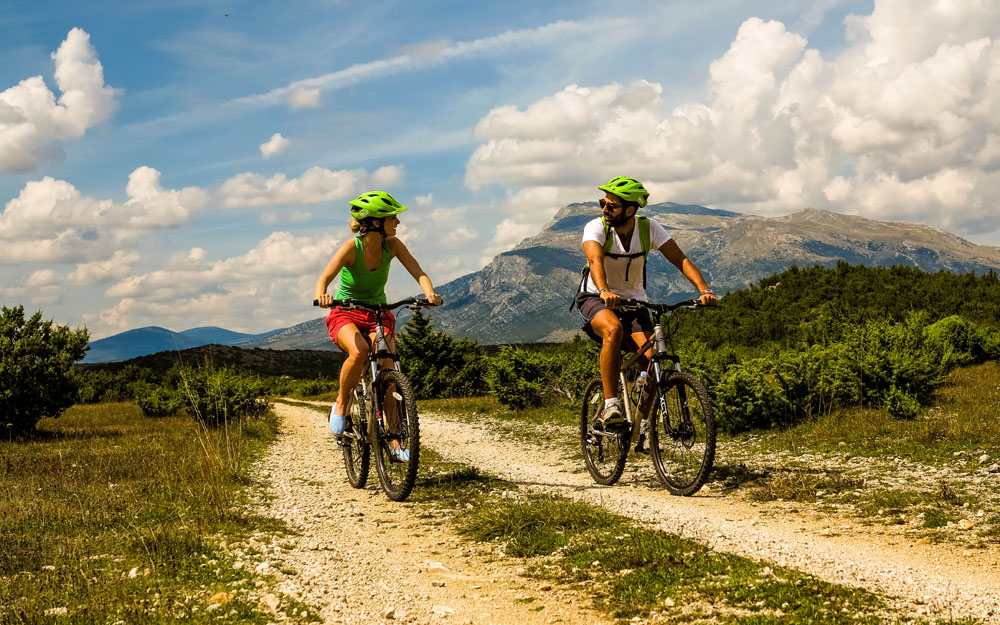
THEY HAVE AN ACE UP THEIR SLEEVE. ALWAYS. It won't be hard to understand that Sinj holds the ace, at the very first glance of the ambience which will be the background of your favorite activity. Lush flora and fauna, pastoral landscapes with an authentic dash of traditions and intriguing cultural and historical remains are what you can expect if you enter a cyclotouristic adventure in the city and its hinterland.

If you are a fan of the outdoors, we suggest the modernly equipped, equestrian-cycling trail Cetina - Sinj (454), which eastern tip follows the peaceful river Cetina from Han to the equestrian club Saint Mihovil in Trilj, and the western tip leads right through the middle of Sinj Field. On the other hand, if you are looking for an authentic piece of history, opt for a 25-kilometers-long cycling trail Aequum (452), or the 35-kilometers-long Hawk's Trail (453). The first runs through the ancient bridges on Cetina, Turkish roads to old mills with gigantic stone boulders, and follows the outlines of the ancient Roman colony Čitluk, while the other one starts from the two-centuries-old bridge on Gorućica, and takes you towards the beautiful green oasis near the town.

For fans of beautiful landscapes, without much thought, we would recommend the Five Sources Route (454) and the delight of fresh, cold and clear side creeks of Cetina – Rumin, Kosinac, Ovrlja, Rude and Graba, as well as the trail Around Visoka (455), for which experts say it offers the best edition of the scenery in this part of Dalmatian hinterland. Anyone who dared to get to know it better, agrees with us in one thing - when it comes to cycling, Sinj really does have an ace up its sleeve!

TRILJ AND VRLIKA - OASIS OF TRADITION. BUT ALSO OF SPORTS AND ADRENALINE. If you enjoy observing flora and fauna, as well as old traditional mills set in pure, untouched nature (some of which are still in function today!), your ideal cycling trails are located at about 11 km away from Trilj. Route 502 Mlinice will give you the best insight into these unique sets of traditional architecture.

We are particularly impressed by the Samardžić Mill on the river Grab, which, just like the Ćosić Mill, on the right bank of this river,represents an extremely valuable rural complex. The oldest one, Uršić Mill, is located at one of its sources, and is a unique example of a mill adjustable to the height of water level, by using the mechanism of the mill wheel!

Other trails offer fascinating examples of old picturesque churches, traditional gravestones stećci with figurative depictions of warriors and horses, and the culture-lovers among cyclers will be specially excited about the trails 505 Brodarić and 507 Gaj Laberije. While the first, near Košuta and Brodarić settlements, passes by the Museum of Trilja rea, containing an extremely valuable ethnographic, archaeological and cultural-historical collection, the other boasts an abundance of interesting features: Tilurium, a Roman military camp with military dormitories, a cistern, remains of mosaics, the statue of Gaj Liberije and the bastion, followed by St Peter's church at the very top of the Gardun site, also including a unique view of the town of Trilj and its surroundings.

If you are in a great cycling shape, do not miss the 36 kilometers-distant Vrlika! You may have heard about it thanks to the best traditional uštipci and the famous opera Ero s onoga svijeta, which has carried out the name of this region around the globe, but actually, this zone is an undiscovered realm for active holidays, that helps you get in touch with your wild side!

The cycling trails in Vrlika, named Cetina, Peruča and Golo brdo, connect by theme with all the important attractions in the area, and they offer the best of both worlds - a peaceful ride through the pleasant macadamas as well as the challenges of mountain biking along Dinara! The picturesque churches, archaeological excavations and mills, the emerald-blue source of Cetina River, the green Vrlika Field and the hidden pearl of Sinj hinterland - Peručko Lake, are part of the scenery for your unique, tailor made, cycling adventure.
The project "Sinj u sridu" was co-financed by the European Union from the European Regional Development Fund and the Operational Program Competitiveness and Cohesion.
The Project “Sinj u sridu”, as
well as promotional materials and their implementation was co-financed by the
European Union from the EU Fund for regional development and operational
programme Competitiveness and cohesion 2014-2020.
Content of promotional article
is sole responsibility of JU RERA for coordination and development of
Split-Dalmatia County and under no circumstances does it reflect the attitude
of the EU and/or the governing body.
For more
information visit www.strukturnifondovi.hr
More: www.cetinska-krajina.hr
Photo: TB Sinj, TB Trilj, TB Vrlika and Dalmatia Explorer

Adrenaline Activities in Dalmatian Zagora - conquer the river…or the mountain!
WHEN WE WOULD CLAIM that our travel itinerary for August does not have Sinj written in bold letters all over it, it would be a complete lie – no, we do not want to give up the solemn spirit of Alka – the ceremonial knight game which includes the euphoria and thunder of "mačkula" (traditional small cannons) , comming at the moment when the "srida" (full center) is hit, as well as the wonderful feeling of peace and communion that invigorates us when we see numerous believers arriving to this heroic town from everywhere , to celebrate the festivities of Our Lady!

Except for the festive events or, as the locals call them, "fjeri", and of course, delicious and lovingly served home-made delicacies, we now have an additional reason to invite you to Sinj – to come and grab a gram of sports adrenaline, all year long!

CONQUER THE RIVER. If you have always wanted to try rafting or sports rowing, according to your fitness level of course, Cetina River is an ideal scene for these activities and you are the ones to dose the levels! For example, if you want a completely tranquill adventure, choose the rowing on the part of Cetina through Sinj Field, as part of the canoe safari.

These are leisure activities suitable for all generations – they do not require any previous experience, special physical effort or skill, while spacious and stable canoes provide guests with a sense of adventure. The rowers mostly relax by observing the surrounding wildlife or photographing it. According to their wishes, they can enter one of the small dead ends of the river, and enjoy observing the swampy ambience, or get off the canoes and explore the river eyot.

It is worth mentioning that canoe safari is also possible on Peručko Lake - explore its coves with a view of Dinara and Svilaja mountains!

If the very mention of the words "relaxing and calm" make you feel like someone hit the snooze button, then a great choice for you is rafting on Cetina, as the experts say, the best one in the neighborhood. Grapple with the river rapids named Z and Javornica, indulge yourself with the unforgettable experience of passing through the small, magical waterfall Studenci… With experienced skippers you will master event the most demanding parts of the river, take a peek at the place where the famous Winnetou movie was filmed, and the whole adventure will remain recorded by the sharp eye of a professional photographer.

And if you want to observe Cetina from a birds' perspecive - we recommend to take the adrenaline bombs such as the zipline and paragliding. While in the first case it comprehends a "flight" over Cetina canyon by means of steel ropes, the other discipline is even more extreme - it is about walking on a rope at a high altitude, usually over a canyon or a chasm. Although you are protected by a security rope during this activity, it really is one just for the bravest ones, and those who have tried it claim that balancing over the source of Cetina in Vrlika, which seems like an emerald&blue eyes, is something else!

IF YOU'D RATHER SAIL THROUGH THE BLUE SKIES, dare to go
paragliding with, and set off at one the best parachuting airstrips in Croatia
– from Greda in Hrvace! The excellent thermal environment allows flying from
early morning hours, and the start, with an accessible approach, is at 820
meters above sea level. Take a tandem flight, or a basic or advanced course, organized by the local Klub slobodnog letenja
(flights club).
FOR MORE MOVEMENT OUT ON THE OPEN, choose hiking, trekking,
or orientation running! This last discipline is particularly beneficial for the
body, because of the active time spent in the unpolluted nature, distant from
the urban environment, and not to mention the aesthetic moment of the
beautiful, picturesque landscape of Sinj and its surroundings!
It requires a collaboration of the mind and the body, as well
as multiple psychophysical engagement of participants in optimal climatic
conditions, and it can be done by people
of all ages and genders, regardless of
their fitness level. As for hiking, Svilaja Mountain and its southeastern slope
Visoka will be a perfect challenge for you, and additionally, you will be able
to enjoy the beautiful view of Peručko
Lake in the Cetina valley and across it, all over to Troglav and Sinj, Sinj
Field and the surrounding mountains, the Dicmanja valley and, finally, the sea and the islands in the distance. The
mountaineering associations of Sinj, Trilj and Vrlika will greatly contribute
to your mountaineering adventure, and we are especially fond of the traditional
winter climb to Kamešnica, organized by the Trilj mountaneering association.
MORE ADRENALINE? WHY NOT! Although we feel that we have given
you quite enough suggestions to actively spend your time in Sinj hinterland,
there are many more options, especially for those who want to get in touch with
their wild side. What do you say about 160 kilometers of exciting off-road
driving in a QUAD vehicle?

Choose from three different adventure levels, and dare to
take the journey through the local roads, rivers, mountain ranges and canyons, oh
and do not forget to spice up the adventurous atmosphere with activities such
caving, climbing and paintball! The none-the-less-adventurous is the photo jeep safari along the intact
nature of Vrlika and its surroundings - feel the pleasure of riding in the
legendary field safari vehicle - Land Rover Defender!
The project "Sinj u sridu" was co-financed by the European Union
from the European Regional Development Fund and the Operational Program
Competitiveness and Cohesion.
Content of promotional article
is sole responsibility of JU RERA for coordination and development of
Split-Dalmatia County and under no circumstances does it reflect the attitude
of the EU and/or the governing body.
For more
information visit www.strukturnifondovi.hr
More: www.cetinska-krajina.hr
Photo: Tz grada Sinja
More: visitsinj.com

Visit Sinj and hit the centre – new glow of Alka's city
Megaproject Sinj u sridu (Sinj in centre) is designed as an integrated project of renewal and embellishing unique cultural heritage of Sinj. Project, worth 68 million and 114 thousand kunas, is focused on reconstruction, renewal and revitalization of immovable cultural heritage and valorisation of intangible cultural heritage.

Within this project streets were reconstructed, and entire urban city core was equipped. Also, Stari Grad fort was arranged as well as Kamičak fort and a bell tower. Building Palacina was also renewed, which is of exceptional cultural-historical value. Here a completely new, arranged Museum of Cetina region will be located, together with multifunctional hall for presentation of traditional crafts and products. This is especially important for numerous family rural households, small crafts and cooperatives dealing with production of autochthonous products and souvenirs. From now on they will be able to present and sell their products throughout the year.

Significant amount of finances go to theme Sinj Alka – mainly for purchase of equipment and development of new multimedia interpretation forms and centre dedicated especially to this knights’ competition, upgrading of souvenir production and other contents.

They also plan to build Interpretation-educational centre on Sinj hippodrome, on almost 2500m2. Centre is planned as a space where visitors will be able to participate in Alka's horse-riding school, and feel real presence and vicinity of noble horses from Alka's stables at first-hand, and even feel original Alka costumes.

On this project, together with Sinj Town as project holder, another five project partners are involved that are relevant for social and economic development of the region and management of cultural heritage.

Sinj is proud of its efforts in sustainable tourism, constantly aiming to ensure pleasurable everyday life for the locals and attraction and freshness to its guests. This was recognized by EDEN network (European destinations of excellence), which awarded this town with first prize in category ''Exceptional cultural-tourist offer in EDEN destinations''.

Numerous significant cultural-art events contributed to winning this award, together with numerous places in town that are used as a stage for various manifestations. The presence of the spirit of past times floating over Sinj is just fascinating – priceless cultural heritage is not just a look in the past, but a firm base for shiny future.

Sinj Alka – organized in honour of victory over Ottomans in 1715, is a sort of time machine that takes you back to some ancient times where one can hear rattling sables and firelocks, neighing of decorated horses, while proud knights of hawk eye and firm fist throw their spears in the centre, the smallest circle of the metal target; but, there is more to see in Sinj.

The church and a monastery of Our Miracuouls Lady of Sinj is one of the biggest Croatian Marian sanctuaries and it is a host of the very top of Croatian klapa (acapella) singing, on a traditional concert Klape To Our Lady of Sinj. Spiritual acapella compositions of exceptional quality in open space of meditative monastery garden must be heard live.


For their vows, pilgrims will hike the Road of Our Lady of Sinj, along ancient roads and picturesque bridges on the Cetina River, traditional hiking and horse-riding paths near the remains of defence walls, abandoned route Rera, former Sinj rail. Stations of the Cross on Grad fort are unique works of sculpture art and are exquisitely incorporated in ambience of a walkway, surrounded by tranquillity of the greenery.
In Cetina Region Museum and Archaeological collection of Franciscan monastery many priceless historical objects from local finds are on display (ancient settlement Aequum, Tilurium), which testify of early civilizations on this area. Multimedia Sinj Alka Museum (Europa Nostra award winner – award for cultural heritage of the EU) in a modern and interesting way presents specificities of knights’ game, and in gallery Sikirica, apart from permanent exhibition of works of Stipe Sikirica, many exhibitions, literary nights and various cultural events are held.
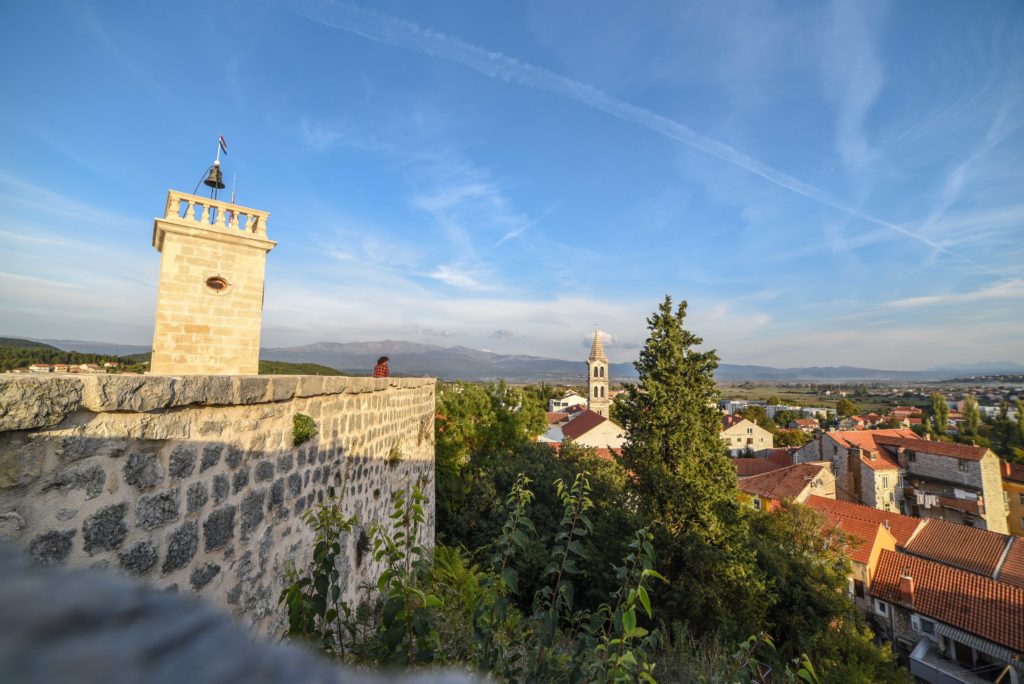
Kamičak, small fort of star-shaped layout, former watchtower whose clock is the main time-orientation point for all the locals even today, is an ideal stage for cultural evets and concerts like Music Nights. Sounds of classical, traditional and jazz music under the starry sky will most certainly delight you and make you come back the next year as well.

Show The Siege of Sinj 1715 is a historical drama spectacle that takes place on authentic locations and shows events from famous battle in 1715. Do not miss to experience how 700 Sinj’s defenders resisted the attack of 70 000 Ottoman soldiers led by Mehmed-paša-Čelić!
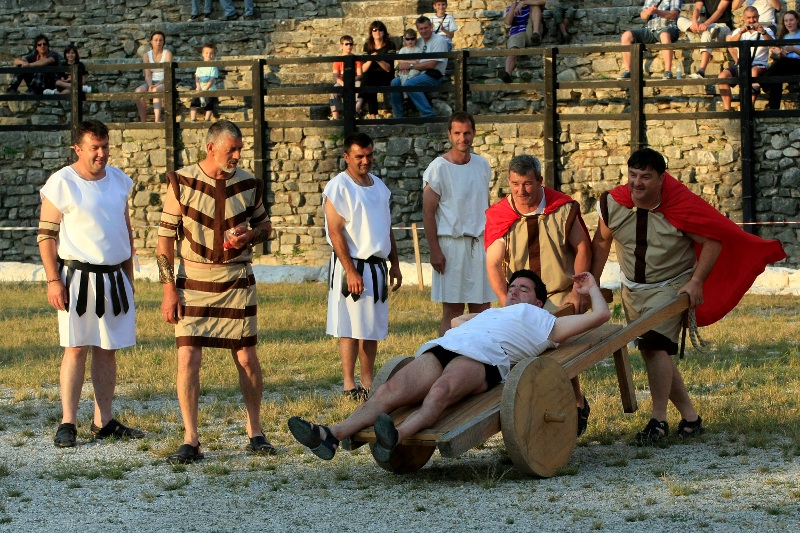
Football is definitely home in Croatia, and you will be reminded of this with football game between Delmats and Romans, designed on the basis of historical fact tied to headstone of Gaj Liberije – ‘kid with a ball’, as they call him in Sinj. The game is actually a comic theatre show, with fictional rules, in spirit of ancient times. In main roles there are emperor Diocletian and empress Priska with their consultants, surrounded by guards and soldiers in their loge. On the field there are musicians, a referee, ten Delamats and ten Roman players, all dressed up in original costumes. Unusual and fun, certainly worth visiting, even if you don’t know what offside is.

S.A.R.S. (Sinj amateur rock gathering) is a festival of alternative culture organized by S.K.U.P. association (Sinj Cultural Urban Movement) for many years. Festival is initiated to promote amateur rock bands from all over the country, but with time, famous both Croatian and international musicians came to perform. With the occurrence of more famous music bands, audience grew as well, so they come not only from towns and places around Sinj, but from more distant places and even from abroad. With musical part, association organizes performances, literary nights, film projections and various activities and workshops. Mark the end of July in your calendar – S.A.R.S. will definitely have one performer according to your taste.

Gljevstock is made for your inner hippy. Conceived as informal music gathering of Sinj’s music band members and their friends, festival soon outgrew its boundaries and continues to thrive year after year. The main goals of this festival are socialising and freedom, bends always play in presentational way, not as a competition. In the spirit of festival, camping and entrance are free, and to organizers, positive reviews are the most important. Pack your tent and check if they’re right.

Sinj Village festival is an excellent opportunity for getting familiar with local products and crafts. Small and medium rural households from rural Sinj area and its surrounding are offered with a precious opportunity to present their traditional high quality homemade products that can’t easily reach consumers: homemade cheese, honey and other bee products, homemade meat delicatessen, wine, brandy, liqueurs, oils, eco-products and so on. Various types of traditional souvenirs are also on display, like hand embroidery, every day and decorative items and natural jewellery – all are a result of utmost care and responsibility towards heritage that is jealously kept, transferred from one generation to another and kept from oblivion. Programme is enriched with performances of cultural-art societies, bands and Sinj’s majorettes. You will leave Sinj with a full belly and full of impressions.
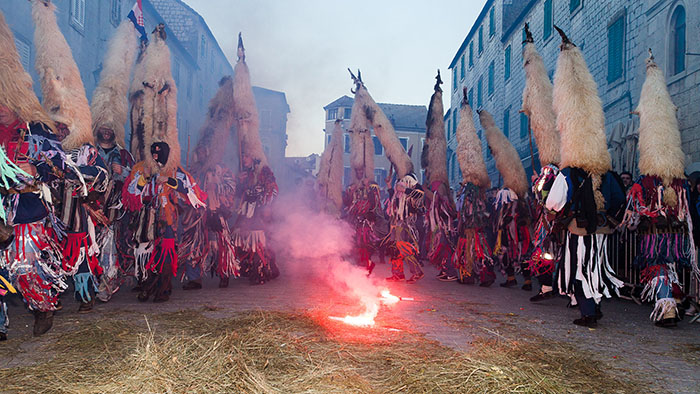
Measureless richness of tradition that is necessary to preserve for
future generations was recognized by Ministry of Culture of Croatia. It protected
rera (colourful two-part singing) as
a cultural heritage, together with annual carnival
customs of villages under Kamešnica led by Grandfathers from Kamešnica, while silent dance, unique folk dance with no musical background has been
listed on UNESCO intangible heritage list.
It’s busy in Sinj for Advent
too, when the cold is chased away with good entertainment and holiday music,
with plenty of good meals and quality drops. As soon as Chrisman and New Year’s
holidays are gone, town keys are handed over to carnival participants, led by
traditional Grandfathers from Kamešnica.
Sinj also organizes Easter breakfast,
pleasant socialising in merry atmosphere of celebrating the greatest Catholic
holiday.
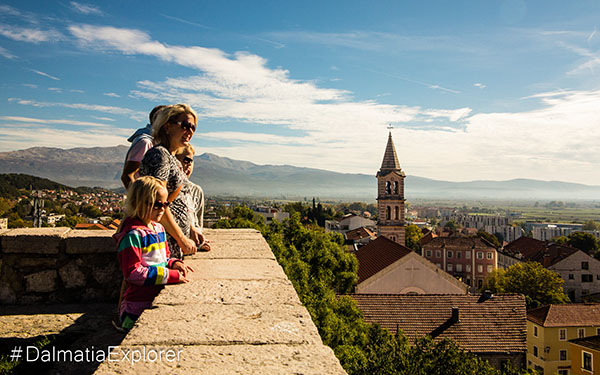
It is hard to single out just one thing that makes the town under Kamičak a magical place – maybe the embrace of mountains, cold river, ash-grey cliffs or magical endless grasslands and meadows of incredibly rich flora and fauna, or even richer cultural heritage? This kind of dedication is nowhere else to be found, such a high level of gastronomic and wine offer, with far-known Sinj’s hospitality – all this is merged into a true idyllic surrounding which will definitely revitalise your body and spirit. Sinj is not just a pass-through destination – thanks to unified and targeted efforts, it has become a very popular destination and you will make no mistake if you make a reservation right now!
| The project “Sinj u sridu” was co-financed by the European Union from the European Regional Development Fund and the Operational Program Competitiveness and Cohesion. |
Photo: Ante Gašpar, Nikola Belančić, Željko Zrnčić and Monika Vrgoč
More: www.cetinska-krajina.hr
Content of promotional article is sole responsibility of JU RERA for coordination and development of Split-Dalmatia County and under no circumstances does it reflect the attitude of the EU and/or the governing body.
Find out more: www.strukturnifondovi.hr








